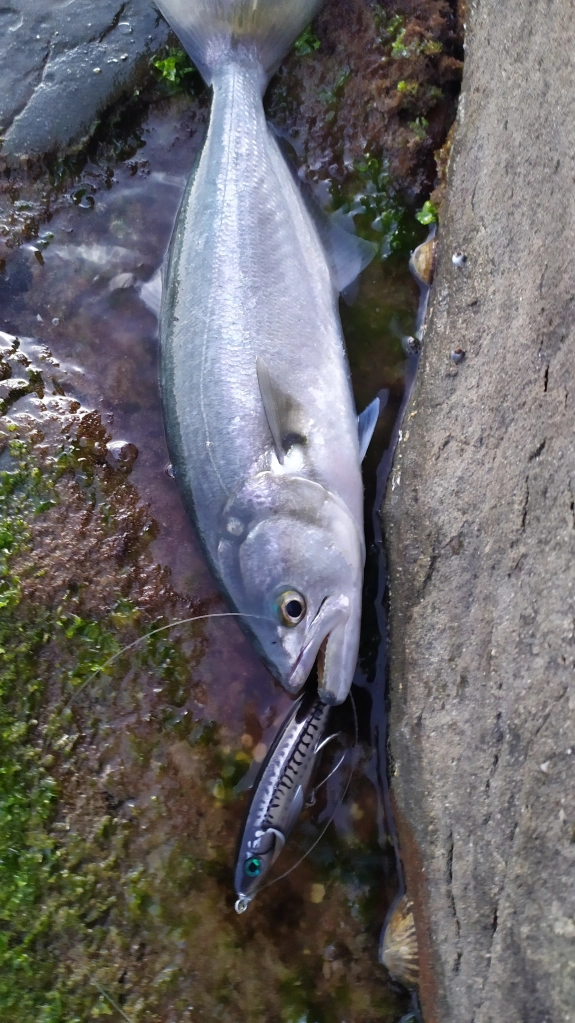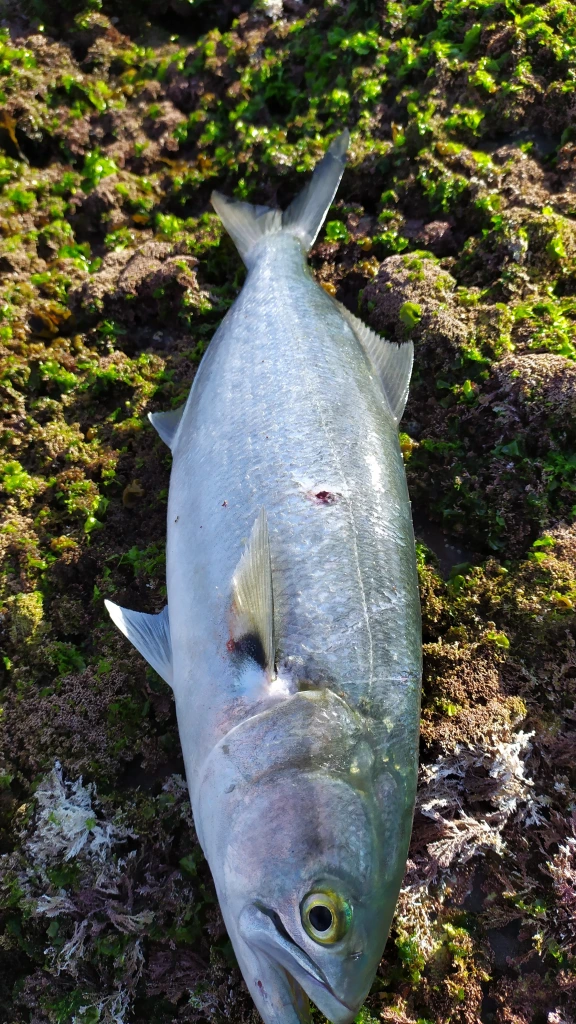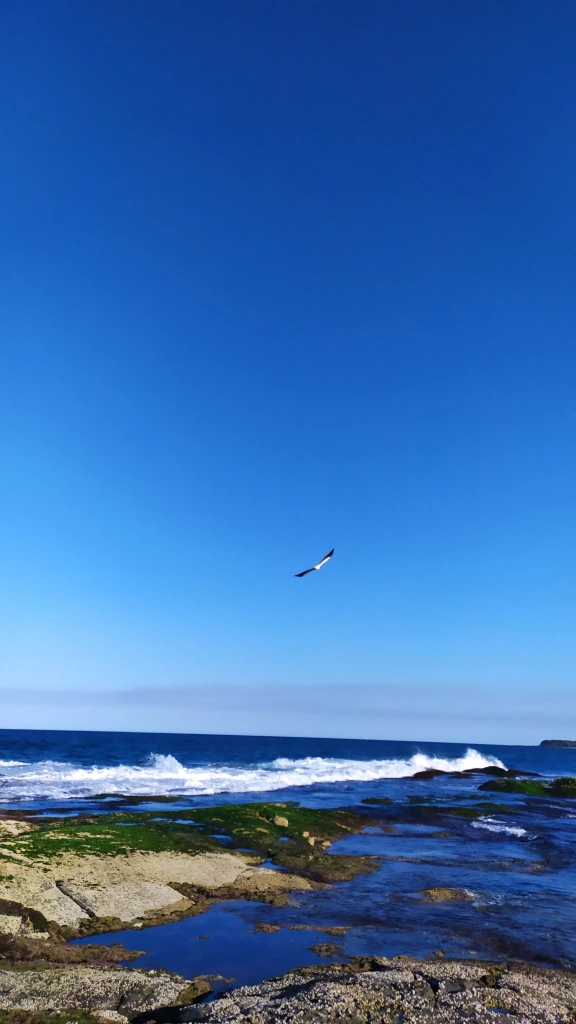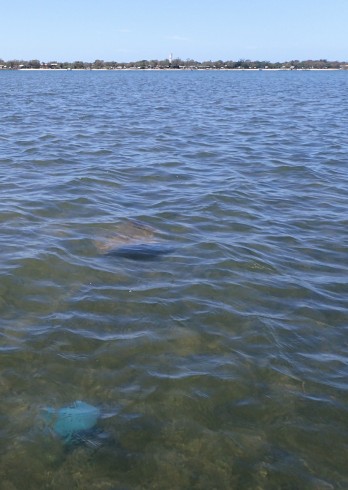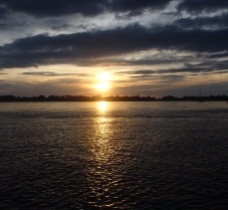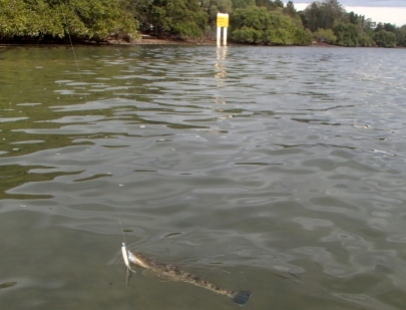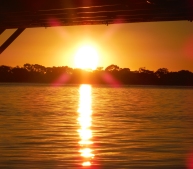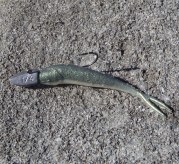Sunday
On Saturday, I packed up the car and drove 3 hours south, from Brisbane, to Iluka. It is about a year since I was here last and it feels like much longer. At last I had the opportunity to get away and fish for some different species. The weather was forecast to be pretty good for most of the week – with limited swell and wind and plenty of sunshine.
I arrived on Saturday night and ate at the Sedgers Reef Hotel. The food in here continues to go steadily downhill, while the prices go up. Everything is deep-fried (mostly from frozen) and hot chips are really the only thing worth eating. Still, the beer is cold and the location is fantastic. It’s a great place to watch the sunset across the mighty Clarence River.
The Clarence River empties into the ocean between Iluka to the north shore and Yamba to the south. The Clarence is a huge river and there is always activity at its mouth and on the rocky headlands, on either side. I prefer to fish the Iluka side of the river mouth, as it is quieter and has the beautifully unspoiled Bundjalung National Park.
This time I was staying at the Anchorage Holiday Park www.anchorageholidaypark.com.au in one of their deluxe cabins. I love to camp at the Woody Head camp ground, but they were booked out for the school holidays and its nice to have a proper fridge and running water, if you are planning to keep a few fish, to take home. There is also good fishing on the river, right in front of the park.
I went to bed early on Saturday night and as usual I found it hard to sleep. At about 4.00 am I woke before the alarm, had a quick cup of tea and set off for the rocks. I decided to start by fishing just to the north of Frazers Reef, at what is known as Middle Bluff (or sometimes Second Bluff). This is a rocky headland in between Woody Head and Iluka Bluff. I walked along the beach in the pre-dawn light and I was relieved to feel only a very light south easterly wind blowing. As the sky grew lighter I could see there was not much swell, which would make things much easier (and safer). I arrived at the northern end of Middle Bluff at about 5.15 am and started to rig up.
I had two rod and reel combos with me. The first – my heavy rig – is a Daiwa Demonblood 962H rod matched with a Shimano Stradic FJ 8000 reel. This is rigged with 20lb braid and I usually fish it with a 25lb or 30 lb fluorocarbon leader. The second is the much lighter, N.S Black Hole Cabin II – S-862 L Spin Rod. It is 2.59m long (8’6”) and rated 8-14 lb. I match this rod with a Shimano Sustain 3000 reel. This is rigged with 15lb braid and I usually fish it with a 12lb to 16lb fluorocarbon leader.
Around dawn I tend to fish with the heavy rig and try a few hard bodied lures or poppers. This morning I tied on a small but fairly heavy (31g) sinking bibbed minnow from Maria – called the Duplex. It is designed for long casts and high speed retrieves and it is ideal for casting from the rocks. I threw it out about 15 times and felt a few bumps. The sun was just coming over the horizon when I felt my first solid hit. I had the drag set quite tight as I did not want to get dragged down into the rocks. I did not hook up, so I cast out again and cranked up the retrieve. This time the hit was much more solid and the rod bent over, there was a fairly slow initial pull followed by a massive yank and the lure pulled free. When I got it back the rear treble had been completely pulled out – not happy.
I continued to fish with another Maria Duplex for about 15 minutes, but I could not find that fish again. I decided to switch to a soft plastic and chose the trusty GULP 4” Minnow in the Pearl Watermelon colour. I started fishing on a ¼ ounce, 2/0 hook jighead. The swell was light and the ¼ ounce jighead ensured the lure would drift around in the water column, before it reached the bottom. I tried to keep the jighead on the bottom for as long as possible without getting snagged. After about five casts a felt a faint bite, very close to the rocks. I dropped the plastic straight back down, only a meter or so away from the rock ledge. I paused for about 10 seconds as it sank to the bottom. When I lifted the rod, the line pulled tight and the rod tip started wriggling. I had the drag set tight as I was fishing very close to the barnacle covered rocks, but the fish predictably tried to swim under the rock ledge. It was no match for the heavier Daiwa rod and 25lb leader and I muscled it out and up on to the rocks beside me. It was a small Jewfish/ Mulloway – I estimated it at just under 50cm – a long way off the new NSW legal size limit. I let it recover in the rock pool for a bit, so that it might avoid becoming a shark snack. Then I speared it back in to the water. I continued with the same rig for about another half hour and had another faint hit, but did not hook up.
I decided to swap to the lighter fishing rig with a 14lb fluorocarbon leader. I had tried a number of bigger soft plastics but none of these had created any real interest. I now swapped down to a GULP 3” Sardine Minnow which I rigged on a ¼ ounce, size 1/0 hook, Nitro breampro fine wire jighead. I lost a few of these to the rocks but at about 8.30 am I felt a solid bite in very close to the rocks. This was a stronger fish but the swell had dropped off a little, which made things easier. I could not muscle this one in, so I let it play itself out and then landed it with the help of a good wave surge. It was bigger than the last at about 55cm – but still not big enough to keep. I took some photos and threw it back in.
I continued fishing for another 90 minutes without any more success, but the birds were working a few hundred metres away. The dolphins came through a couple of times – so I assume that there was some bait around. At about 10.00 am, I gave up for the morning. There was no fish for supper but it was a great start to the week.








